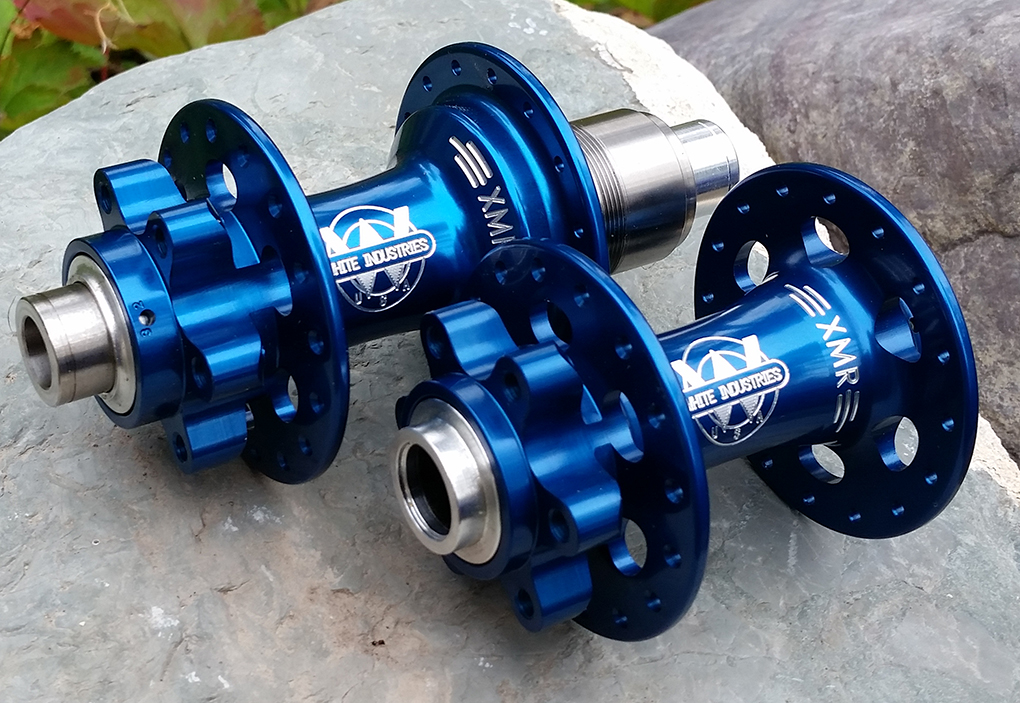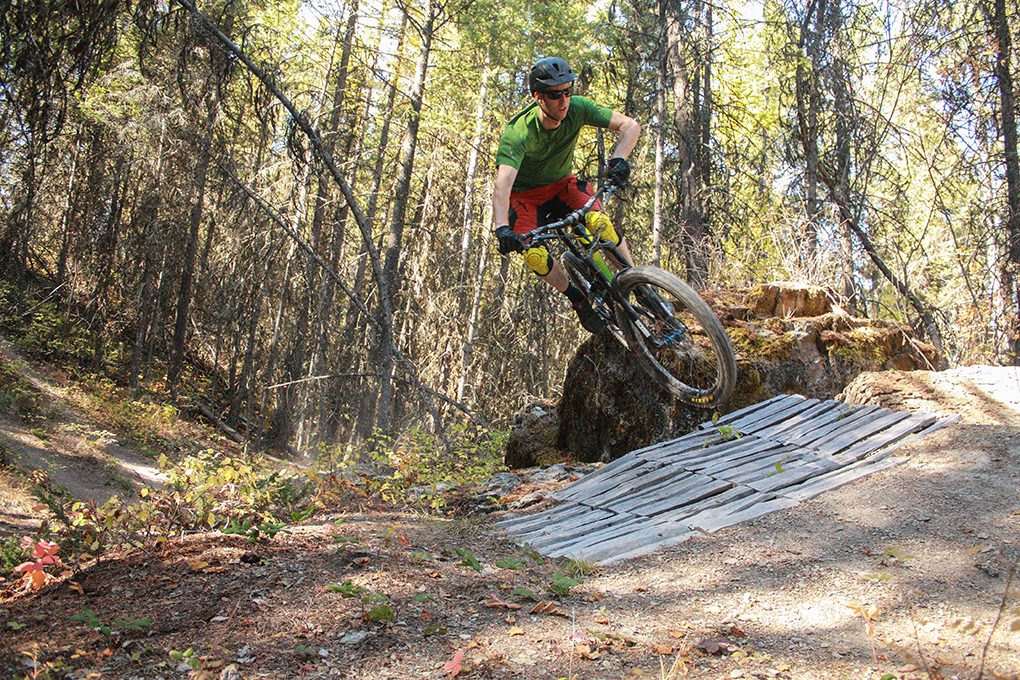
White Industries XMR Hubs
Rear: 142 x 12mm
Front: 100 x 15mm
Blister’s Measured Weight: 311g rear, 172g front
MSRP: $169-$189 Front
$332.25 – $352.25 Rear (pricing varies based on color)
Laced to: WTB Asym i35 rims
Mounted to: Devinci Spartan Carbon RR
Reviewer: 5’9” 155 lbs.
Test Duration: 1 month
Test Locations: Montana, British Columbia
Intro
White Industries has been in the game for quite a long time; the company was founded in 1978, and thus precedes the first production mountain bike by a few years. During the explosive growth of aftermarket bike componentry in mid-90’s, White Industries had some of the most sought after components on the market.
Since then, many of their competitors have withered away or been bought up and merged with larger brands. But White Industries soldiers on, and continues to crank out an assortment of high quality, nicely machined parts.
Some of their parts fill very specific niches not covered by the larger brands, like their eccentric hub that allows a frame with vertical dropouts to be used as a single speed without a chain tensioner. I’ve taken a look at their new XMR hubs, which are fairly traditional in most senses.
Specs and Options
The XMR hubs are offered in a few different configurations to fit the majority of bikes running disc brakes that are currently on the market. I rode them with a 142 x 12mm rear axle, and a 100 x 15mm front, with a normal 6 bolt ISO disc pattern and a XD driver for use with SRAM 11-speed cassettes.

The front hub came with end caps for conversion to a standard QR, and it’s also available in a 12mm thru axle for use on road and cyclocross bikes. The rear hub can be converted to a standard 135mm QR, and the driver body is also available in a standard Shimano spline as well as a Campy version. The only downside here is that there’s no 20mm front axle option on these hubs.
Update: We’ve confirmed with White Industries that both the XMR and CLD (center lock) hubs are available in Boost spacing.
While the XMR hub is only available as a 6 bolt disc pattern, White also makes the CLD, which is similar in pretty much all respects except that it’s designed for center lock rotors.
The driver body comes standard with 3 pawls and 24 points of engagement, but for no extra charge, you can get an upgraded version that has 48 points of engagement. Each of the three pawls has two teeth, so there’s effectively six points of engagement at all times.

I rode the higher engagement version, which I think is generally preferable for technical riding. The only people I’d point toward the lower engagement are people generating so much torque that they’re tearing up the internals of hubs—in that case, the lower engagement might hold up a little better.
The driver body is made out of titanium, which weighs less than a steel driver body, but holds up much better than the more common aluminum freehubs found on most high end hubs.
NEXT: Details, The Ride, Etc.

Good review. Hard to say much about good hubs at times — Well, they worked perfectly, so I forgot about them!
Is WI offering Boost 148/110 hubsets? My new endurance race bike will be so equipped, so like it or not, that’s what I’ve got to find. The idea of WI’s taller flanges along with the Boost width is appealing.
Hey Tom,
They are indeed – WI says they have both XMR and CLD (center lock) hubs in a Boost spacing, in stock now.
Incidentally, from talking to a lot of wheel, fork, and frame companies at Interbike, it looks like the industry is rapidly moving towards adoption of boost spacing. I’d wager a dollar that almost all trail / all mountain / enduro bikes will have boost spacing within the next 2-3 years.
These look like nice hubs, too bad they have no distribution.
White Industries Rear Hub Instuctions
“6. Clean out the ratchet ring area in the hub shell so that it is free of grease. Replace pawls and spring as needed and coat pawl and spring pockets with a light oil or dry lube (Fig.9). DO NOT GREASE. Check the function of each pawl by gently depressing each pawl (Fig.10). The pawls should easily spring back into place.”
FYI. Phil’s Tenacious oil will make them much quieter without resorting to grease. Also, it doesn’t appear that the hub will engage faster with more points of engagement. I think the spacing between each tooth is the same, you just have twice as may contact points.
I guess the teeth are not the same:
White Industries: High Engagement Retro Fit
What was your long term review on these since writing this. I am looking at picking up a pair? Still find the engagement is enough? Ever have any issues with the preload?